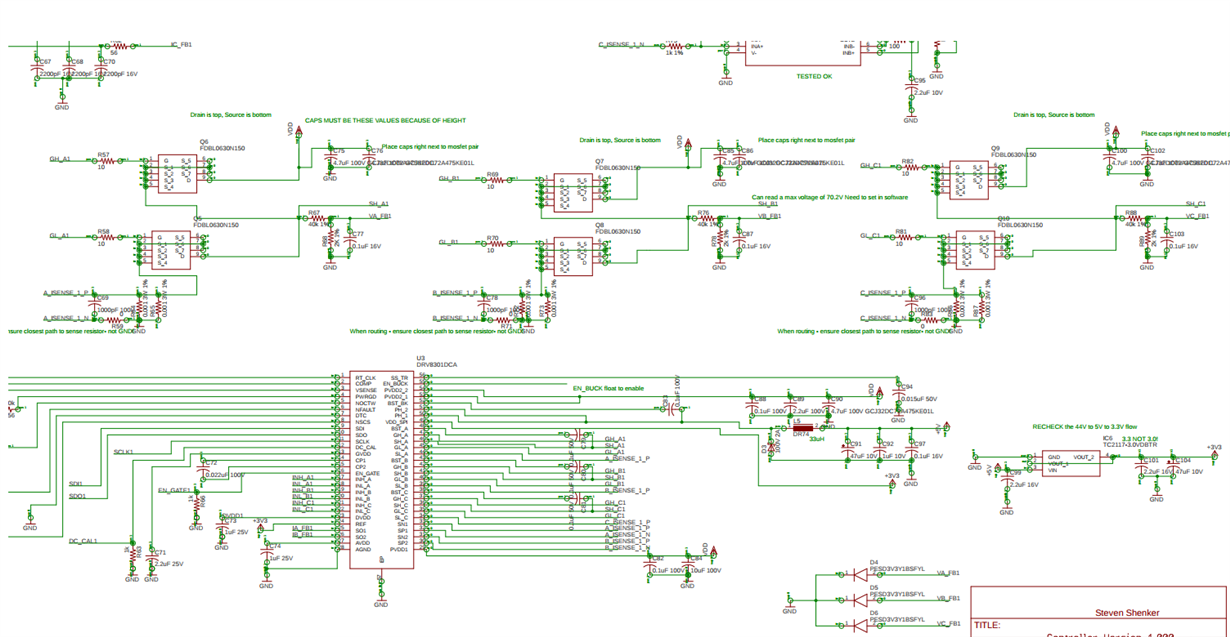Other Parts Discussed in Thread: DRV8353
Hi there,
I have put together a motor controller board based on the DRV8301 where the mosfets gate charge combined with the desired running frequency exceeds the maximum average total output current of the DRV8301 which is 30 mA according to the data sheet.
My selected mosfet has 172 nC gate charge at 10V. My calculations for required drive currents for 6 mosfets at 48 kHz is = 6 * 48 * 172 = 49.5 mA, exceeding the maximum output of the DRV8301s 30 mA.
When measuring the mosfet gate voltage I would have thought that because the DRV8301 cannot provide 49.5 mA average that the measured value would be lower (e.g around 6V) but it was still 10V.
Is there any explanation for this? Does this mean that the DRV8301 is actually providing more current than stated in the datasheet? Will this cause damage to the DRV8301 over time? If it is not providing 49.5 mA then where would this effect be noticeable/measurable? Or am I missing something?
Many thanks!


